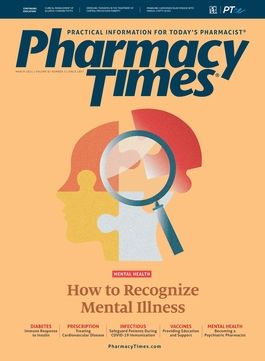Publication
Article
Pharmacy Times
Female Pharmacists Are on the COVID-19 Frontlines
Author(s):
International Women’s Day serves as a reminder of the role women play in fighting the pandemic and spotlights equity in pay and recognition.
On March 8, 2021 the world celebrated International Women’s Day, and in the wake of the coronavirus disease 2019 (COVID-19) pandemic, issues such as pay equity and recognition of the important contributions women have made take on greater importance.
This year, the United Nationals theme for International Women’s Day focused on “women in leadership and the role they’ve played in shaping a more equal future and recovery from the COVID-19 pandemic”1
Women have stood at the frontlines of the COVID-19 crisis as caregivers, health care workers, and leaders in fighting the pandemic.
In particular, the role of pharmacists has been key, particularly in terms of vaccine administration.
Consider that the majority of pharmacists (59.7%) are women, and that number continues to grow, up from about 55% in 2013.2,3 Conversely, the January jobs report from the US Bureau of Labor Statistics showed that approximately 4 times as many women versus men left the workforce.4 Overall, approximately 2.3 million women have left the workforce since February 2020.5
Because of COVID-19, however, the demand for pharmacists has risen.
Will COVID-19 change the way pharmacists are viewed? Will the long-sought provider status for which pharmacists have advocated come to pass? Combined with advances in technology, will the doors open for pharmacists, providing them expanded career options not previously in the realm of possibility? Theses change may be coming sooner than many think.
The reality is that despite efforts toward gender equality, many women shoulder most of the responsibility for childcare. Perhaps this year more than ever, it is important that employers seek to find ways to support employees as they navigate the “new normal” or remote work, particularly assisting women who may or may not have partners at home helping with childcare.
Women of color have been hardest hit by pandemic joblessness, which underscores why International Women’s Day was even more important this year.
Too many women around the world, particularly in developing countries, have fewer resources to help them through the pandemic, including getting vaccines. So, even with International Women’s Day behind us, let’s not forget how important it is that employers pay particular attention to the delicate balance many women must strike as we emerge from a pandemic that has forever changed how we see the world.
SUZANNE SOLIMAN, PHARMD, BCMAS, is the chief academic officer at the Accreditation Council for Medical Affairs and the founder of Pharmacist Moms Group, the largest group of female pharmacists in the United States, with more than 35,000 members.
REFERENCES
- International Women’s Day 2021 theme – “women in leadership: achieving an equal future in a COVID-19 world.” UN Women. November 10, 2020. Accessed March 4, 2021. https://www. unwomen.org/en/news/stories/2020/11/announcer-international-womens-day-2021
- Pharmacists. Data USA. 2018. Accessed March 4, 2021. https://datausa.io/profile/soc/pharmacists
- Pharmacy and the evolution of a pharmacy-friendly occupation. National Bureau of Economic Research. February 2013. Accessed March 4, 2021. https://www.nber.org/digest/feb13/pharmacy-and-evolution-family-friendly-occupation#:~:text=Today%2C%20about%2055%20 percent%20of,1960s%20to%2065%20percent%20today
- Economic news release. US Bureau of Labor Statistics. Updated February 5, 2021. Accessed March 4, 2021. https://www.bls.gov/news.release/empsit.t01.htm
- National Women’s Law Center. Another 275,000 women left the labor force in January. February 5, 2021. Accessed March 4, 2021. https://nwlc.org/resources/january-jobs-day-2021/







